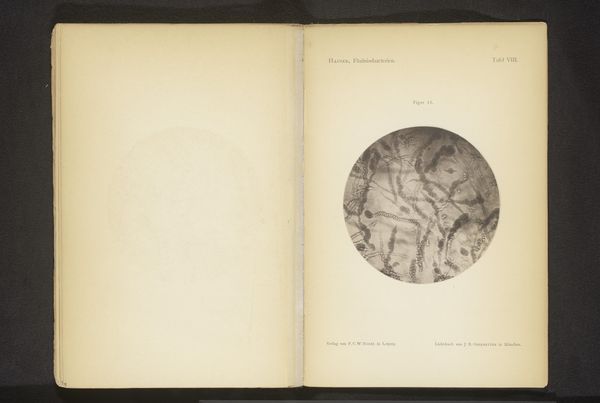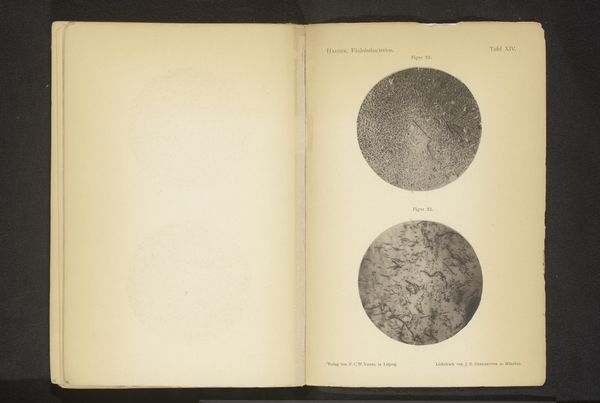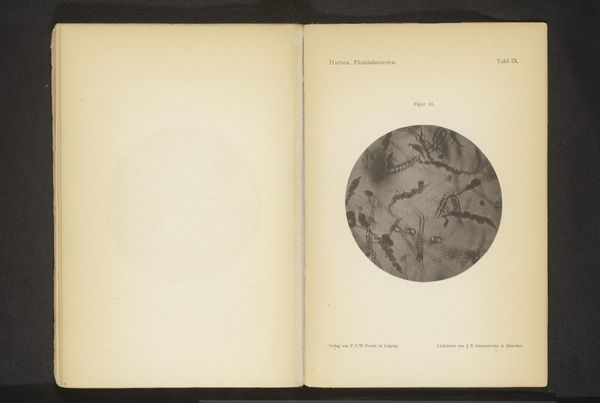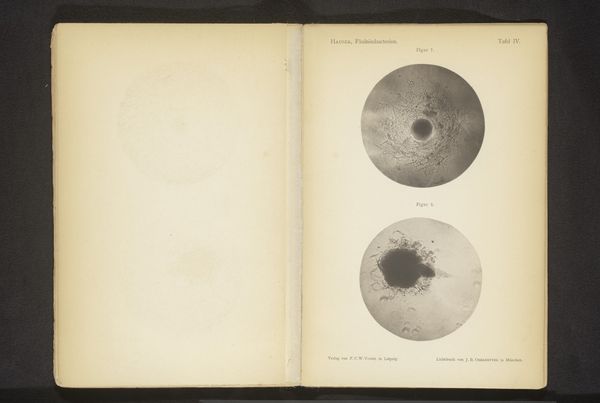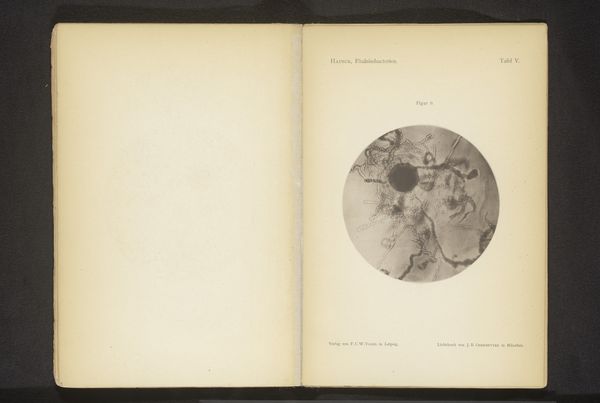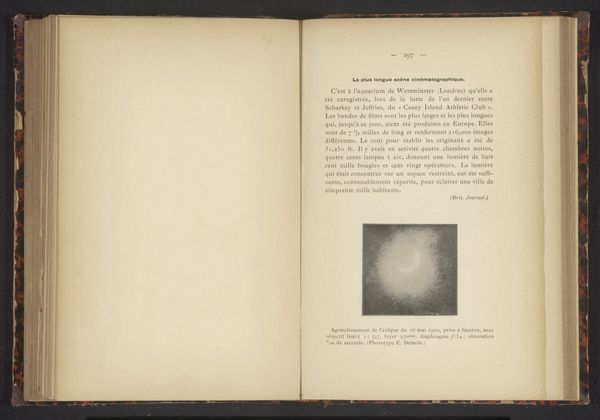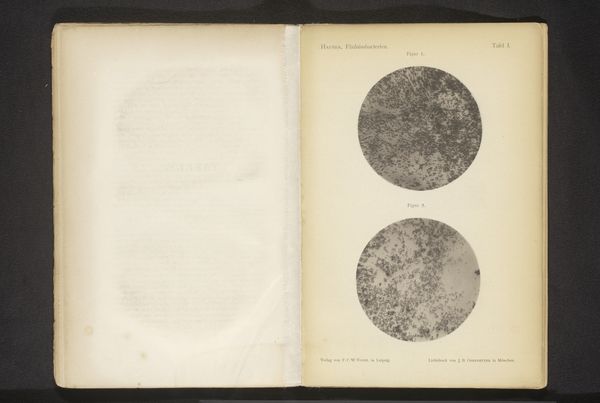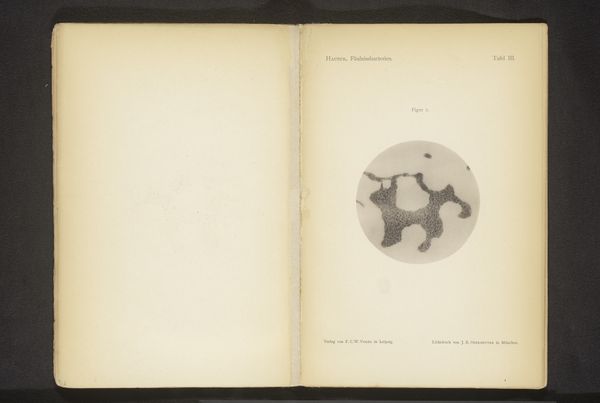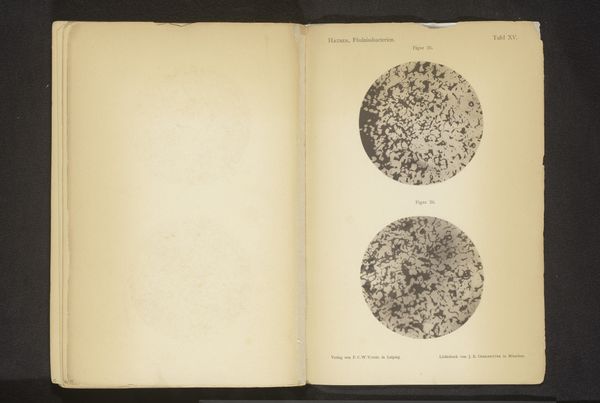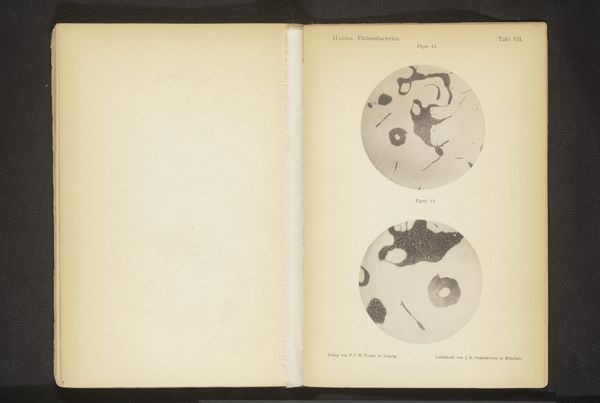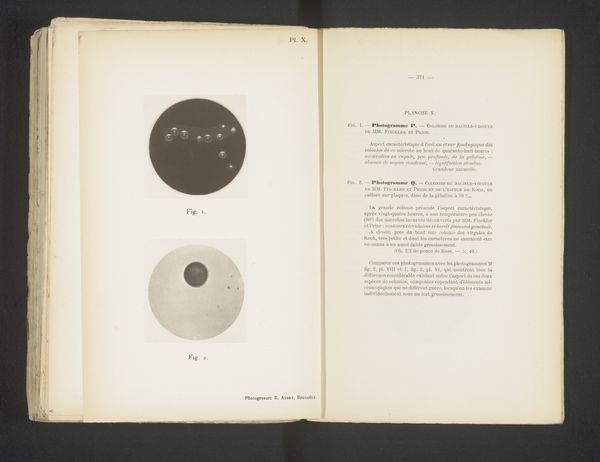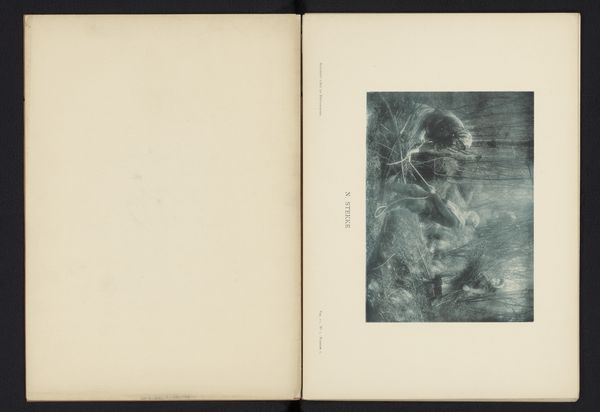
print, photography
# print
#
photography
#
academic-art
#
monochrome
Dimensions: height 113 mm, width 112 mm
Copyright: Rijks Museum: Open Domain
Curator: This compelling image is a microscoopopname van bederfbacteriën, a photograph of decay bacteria, produced before 1885 by Gustav Hauser. It's a print, originally monochrome, now displayed as an open book. The left side is blank, while the right contains the photographic image of the bacteria. Editor: Initially, I am struck by the unsettling beauty of this circular form. It resembles a celestial body viewed through a telescope, but simultaneously suggests something organic and inherently…unhealthy. It provokes feelings of unease, contrasting a certain technical perfection with implied biological processes. Curator: That contrast is really interesting when considering the technology and process itself. Producing photomicrographs required specialized apparatus and techniques at the time, essentially using light and chemistry to translate what the human eye cannot normally perceive. Consider the labor involved, from the cultivation and preparation of samples to printing! Editor: Indeed! And framing this within a larger discourse, who gets access to knowledge? How is information disseminated? This bacterial image reminds me of scientific positivism and how these ideas were perceived in the late nineteenth century. Also, I see links with contemporaneous debates regarding the nature of hygiene, illness, and who bore the burden. We also need to question the objective lens the camera seems to offer! Curator: Absolutely. While seemingly clinical, its existence depended entirely on the artist’s hand manipulating light and materials, which impacts objectivity itself. Furthermore, think about how this image might have circulated as both scientific documentation, but also as propaganda around the industrial revolution and subsequent rise of the bourgeoise and impoverished. How effective! Editor: The convergence of science and social ideology creates interesting implications. Examining art from marginalized perspectives can illuminate who profits from narratives of control. To this day, questions are relevant regarding power, social discourse, and ways to contest existing systems of visual representation! Curator: Exactly. Investigating these elements demonstrates the multifaceted nature of material artistic practices. Seeing beyond its initial imagery and exposing what processes created that imagery! It exposes truths concerning power in visual display. Editor: Yes, reflecting on who produced this image and where it circulates gives crucial clues for exploring ways toward knowledge mobilization and art activism. It brings forward critical questions!
Comments
No comments
Be the first to comment and join the conversation on the ultimate creative platform.
